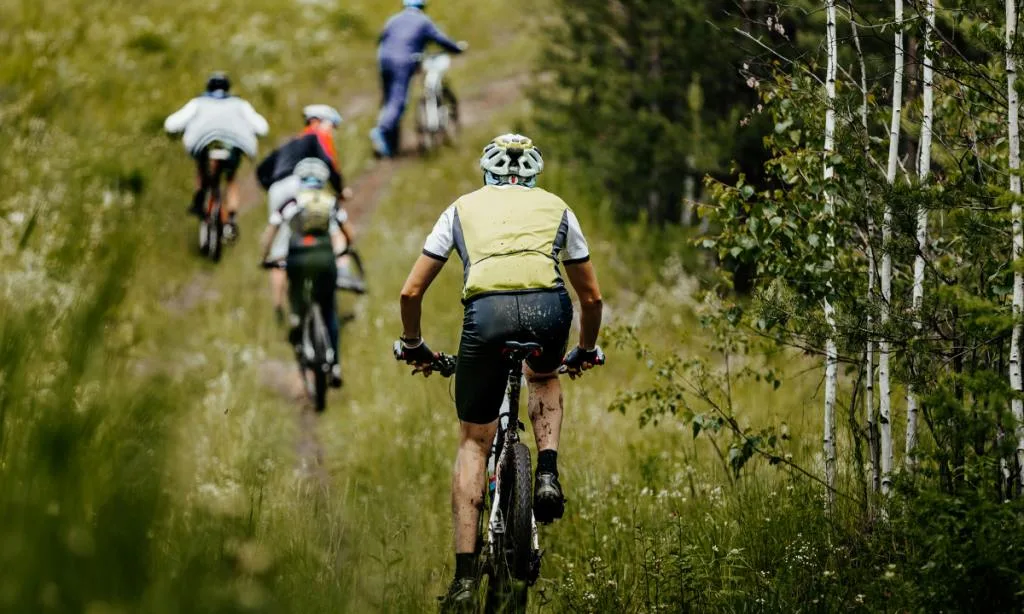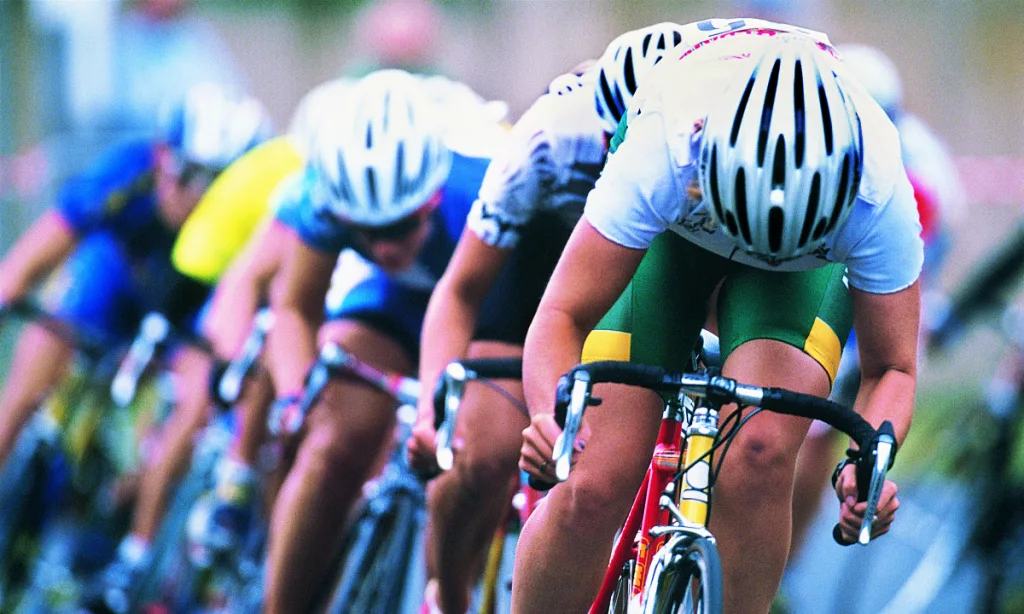
Cycling is a tough sport. It also happens to be an extremely enjoyable activity and it is tempting to try to cycle for longer and further than your current level of fitness will allow. If you are just starting out, or you are emerging from a winter’s hibernation, it is always good to know just how far you can go in that state.
A beginner cyclist, or indeed, an unfit cyclist, should always aim to ride for a distance that is comfortable to achieve without approaching a hypoglycemic state or pushing their heart rate above that which is recommended for their age, their weight, and their current state of fitness.
Note: This page contains affiliate links. If you choose to purchase after clicking a link, I may receive a commission at no extra cost to you.
For this article, we are going to treat the beginner cyclist and the experienced, but unfit, rider in the same category. They are, after all, both at a similar level of fitness. So let’s jump in and see how far they should be pedaling.
What Is the Recommended Distance for a Beginner?
Everyone has a different initial level of fitness, a greater or lesser athletic ability, be younger or older, have different muscularity, have grown to be taller or shorter, leaner or curvier, etc. So the recommended distance will be different for everyone.
We’ll get to exact distances for beginners later, but first, here’s how you can figure out your own distance limit:
- Hop on your bike and go out for a one-hour-long-cycle-ride.
- Manage a comfortable pace. You should aim to finish the ride feeling as though you have expended sufficient energy to allow you to consider the ride as a solid exercise, but still able to hold a conversation.
- Measure how far you have traveled to that point and be confident that you can travel the distance back to your starting point at the same pace.
Having said all that, a beginner cyclist should probably aim to travel somewhere between 10 or 12 miles per hour which will ensure that the distance traveled in a 2-hour ride is somewhere around 20 miles, more or less.
QUICK TIP: When you are just starting out on this cycling adventure, you should choose to ride on flat ground rather than hilly terrain while you are still finding out your comfortable distance.
As a beginner, you should easily be able to do an 18 or a 20-mile route if there aren’t too many hills in your way. Start slowly and build up to greater distances and speeds.
There is nothing more demoralizing and probably nothing that will increase the likelihood of you storing your bike permanently in the garage, or putting it up for sale in the classifieds, than pushing yourself too hard and too fast when you are just starting out.
Cycling can be a tough sport and it can challenge your mental fortitude in ways you would never have believed possible.
The pro riders in the peloton of the Tour de France make it look easy, and for them, it is. But they also started out riding a short distance at a relatively slow speed. Give yourself the time to develop your skills and your fitness and cycling will reward you on so many levels.
Having said all of that, however, there will always be that little voice in the back of your mind that goads you into extending yourself just that little bit further and just that little bit harder. So if you wanted to really challenge yourself right off the bat…how far a distance should you aim for?
Can I Ride 100 Miles Without Training?

We scrutinize times and compare ourselves against all other riders of a similar age and a similar weight. We even compete with ourselves over any given segment and try to better our efforts every time we travel that route.
And thank goodness for this competitive instinct. It’s what drives us to be better, fitter, and faster. Delivering us to the promised land of optimum physical health and mental well-being.
Riding 100 miles without training may seem, at first, like a crazy idea, and to be completely honest, it is a crazy idea. But if you are that type “A” personality that drives themselves to achieve the improbable, then pay attention to the following 5 tips:
#1: Clean Your bike
A dirty chain is going to rob you of precious energy by demanding more wattage to achieve the same result. Likewise, cleaning your frame and your components will not only make you feel better about yourself but will demand less energy to propel you forward, both aerodynamically and mechanically.
#2: Inflate Your Tires
Pump your tires to the recommended pressure depending on your weight. Tires that are inflated to the optimum pressure will offer less rolling resistance and, possibly, more importantly, will give your wrists, your forearms, and your butt a more comfortable ride over long distances in the saddle.
#3: Eat & Drink Before, During, & After the Ride
Your car will go nowhere if it runs out of fuel, and you and your car have this in common. If you do not fuel your ride you run the risk of “bonking” which is nowhere near as pleasant as it sounds.
Bonking is essentially a state of hypoglycemia whereby your body has depleted itself of the fuel required to feed your muscles. You will at that point come to a dead stop with your entire body screaming in pain. Do not bonk. Eat. And drink.
#4: Check Your Clothing
And specifically, check that your bib-shorts or your MTB baggies have sufficient cushioning for a long ride. If you are going to be riding in the wet at any stage of the ride, or in a freezing wind, make sure you pack your warm kit and your waterproofs. Bad weather can seriously sap your energy levels.
#5: Slowly Does It
Do not set out at a fast pace. Be a conservationist. Conserve both your energies and your expectations. And, if you are riding with a group of riders, try to tuck into the slipstream of the rider in front of you.
Take your turn at the front only if you feel up to it. Drafting like this will save up to 30% of your available energy.
This informative video from the fantastic GCN riders is very helpful in planning and riding a long distance:
Final Thoughts on Riding When You Are Not Fit
While cycling can be a very competitive sport, you should never feel that you have to join the circus as a performer. It’s totally okay if you only want to do it for fun, exercise, or for transportation purposes only.
Whatever your reason for cycling is, it’s a good sport for your health. Check out this article I wrote about the wide range of benefits cycling has.
So, feel free to ride the distance that you think you are capable of riding without having to call for an Uber to get home, and ride at the speed you feel comfortable achieving.
Remember; no one else is going to ride your bike for you. It’s just you and your bike out there. Make it an enjoyable experience.
